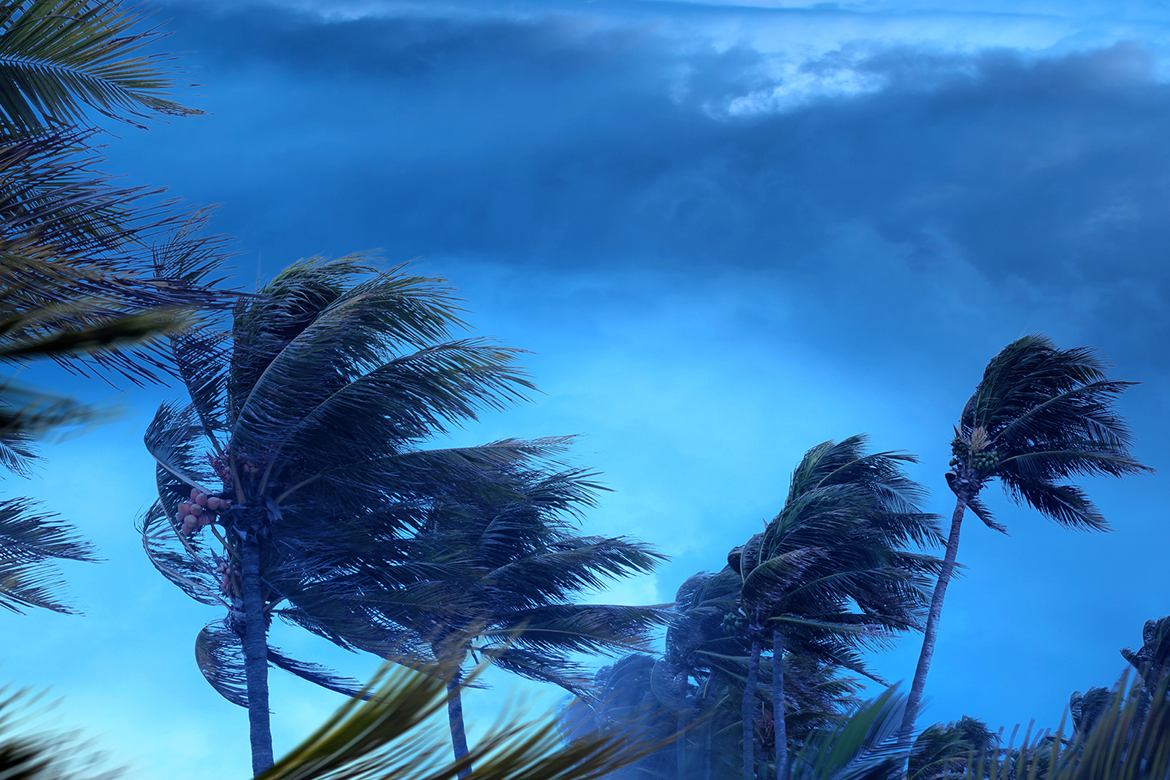An average of three hurricanes strike American coastlines over a two-year period, according to the National Weather Service. Of these, at least one will be classified as a major hurricane with winds of 111 mph or greater.
Hurricanes are just one example of extreme weather events that threaten life and property. Storm surges, tropical storms, and tropical depressions also cause high winds, heavy rain, flooding, and other potentially devastating hazards. Not only that, but scientists say intense and deadly weather events will continue to escalate due to climate change, according to the Weather Channel.
Related: Download Our 2021 Hurricane Guide
The takeaway, especially for anyone who lives in a hurricane-prone region? There’s never been a better time than now to formulate a hurricane evacuation plan. Here’s a closer look at four things you can do in the short- and long-term to prepare for hurricane season and other extreme weather events.
Have a hurricane evacuation plan

While riding out a storm is sometimes an option, you may be advised by authorities to evacuate. If you are in one of the Florida hurricane evacuation zones ordered to evacuate, follow the instructions provided and evacuate immediately. If necessary, visit the Red Cross website to locate open shelters and evacuation centers.
Related: Six Hurricane Preparation Tips for Homeowners
Additionally, FEMA’s comprehensive guidelines for evacuation can help you evacuate safely and quickly. Here are some best practices to follow:
- Know your evacuation route
- Have an agreed-upon rally point with family members (as well as a backup location in the event that your chosen one is inaccessible)
- Plan ahead for pets in the event that they’re not allowed at the shelter with you
- Establish a central emergency communication contact
Pack an emergency supply kit

Also known as “go-bags,” these kits include everything you’ll need to survive—whether you’re sheltering in place for several days or hitting the road.
Ready.gov has assembled a handy roundup of must-haves supplies for your emergency kit. In addition to the usual suspects like water, batteries, flashlights, and non-perishable foods, items like a whistle for calling for help, garbage bags, and moist towelettes are also recommended.
In addition to these essentials, other items to consider adding to your go-bag include everything from health and hygiene items like face masks, soap, hand sanitizer, and disinfecting wipes, to a mess kit and other equipment for cooking and eating. You should also have extra cash and/or traveler’s checks in the event that you can’t access your credit cards, bank, or an ATM. And don’t forget about prescription and nonprescription medications, including eyeglasses and contact lenses.
Lastly, if you’re traveling with infants, children, and pets, make sure you’ve got supplies for them, too. These may include formula and diapers, pet food and extra water, and coloring supplies, and other activities to help keep little ones occupied.
Harden your home

Featuring our Sentinel® Casement Window 238 and French Door 160
The effects of hurricanes challenge the structural integrity of homes. Roofs, windows, and doors are especially vulnerable points. Taking proactive measures to safeguard these and other areas is referred to as “home hardening.”
Upgrading to impact-resistant windows and doors is one of the most effective ways to harden your home. Plus, this can also be done at any time—not just when a storm is approaching. Other preventative strategies include having your roof professionally checked to confirm that it’s properly anchored and upgrading to a wind-rated garage door.
If you find yourself in the path of a storm without these protections, boarding up doors and windows can help fortify weak points and minimize damage.
Related: Six Smart Ways to Spend Unexpected Money
Stay safe during the storm

While proper planning can ensure that you’ve done everything in your power to safeguard your home and loved ones, there are some things you can do during a storm to continue to provide protection.
Listening to your NOAA weather radio can help you track the passing of the storm so you know when conditions are safe. Additionally, refrain from excessive use of cellphones and other devices to conserve battery life, shelter in window-free interior rooms on the lowest level of your home, and avoid candles as they can cause explosions if a gas leak occurs.
Lastly, if you have a generator, it should be kept outside and not near any windows.
When you’re in the path of an extreme weather event like a hurricane, time is of the essence. Rather than waiting until the crisis is imminent, proactive planning maximizes both safety and peace of mind. Given that extreme weather events are only expected to increase in the coming years, hurricane planning and preparation is an invaluable investment in the wellbeing of your home and its inhabitants.
